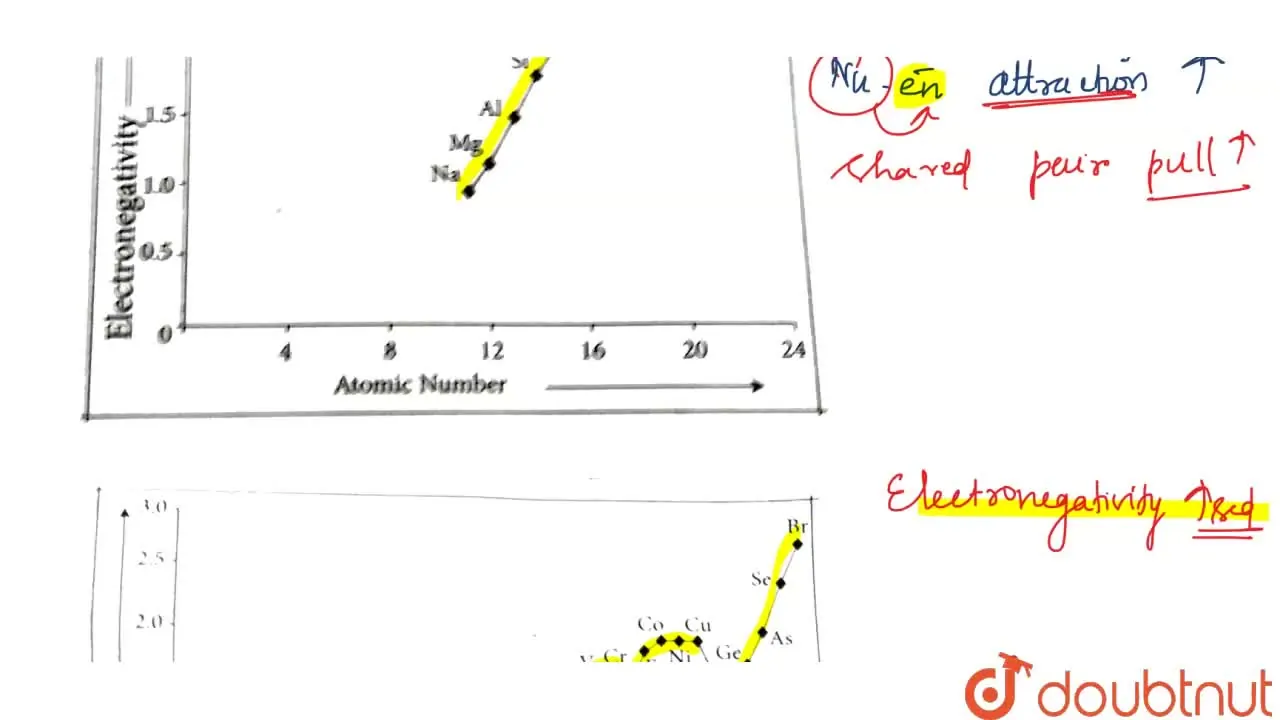The electronegativity for some elements on pauline scale of different groups and periods are listed below. Plot these values against atomic number. From the pattern, explain the variation along a period and a group.
2nd group elements : Be (1.6), Mg (1.2). Ca (1.0), Sr (1.0) Ba(0.9)
17th group elements : F (4.0), CI (3.0), Br (2.8). I (2.5)
3rd Period elements : Na(0.9), Mg(1.2), AI (1.5), Si(1.8), P(2.1), S(2.5), CI(3.0)
4th period elements : K(0.8), Ca(1.0). Sc(1.3), Ti(1.5), V(1.6), Cr(16), Mn(1.5), Fe(1.8). Co(1.9), Ni(1.9). Cu(1.9). Zn(16), Ga(16), Ge(1.8), As(2.0), Se(2.4), Br(2.8) Solution in Tamil
2nd group elements :
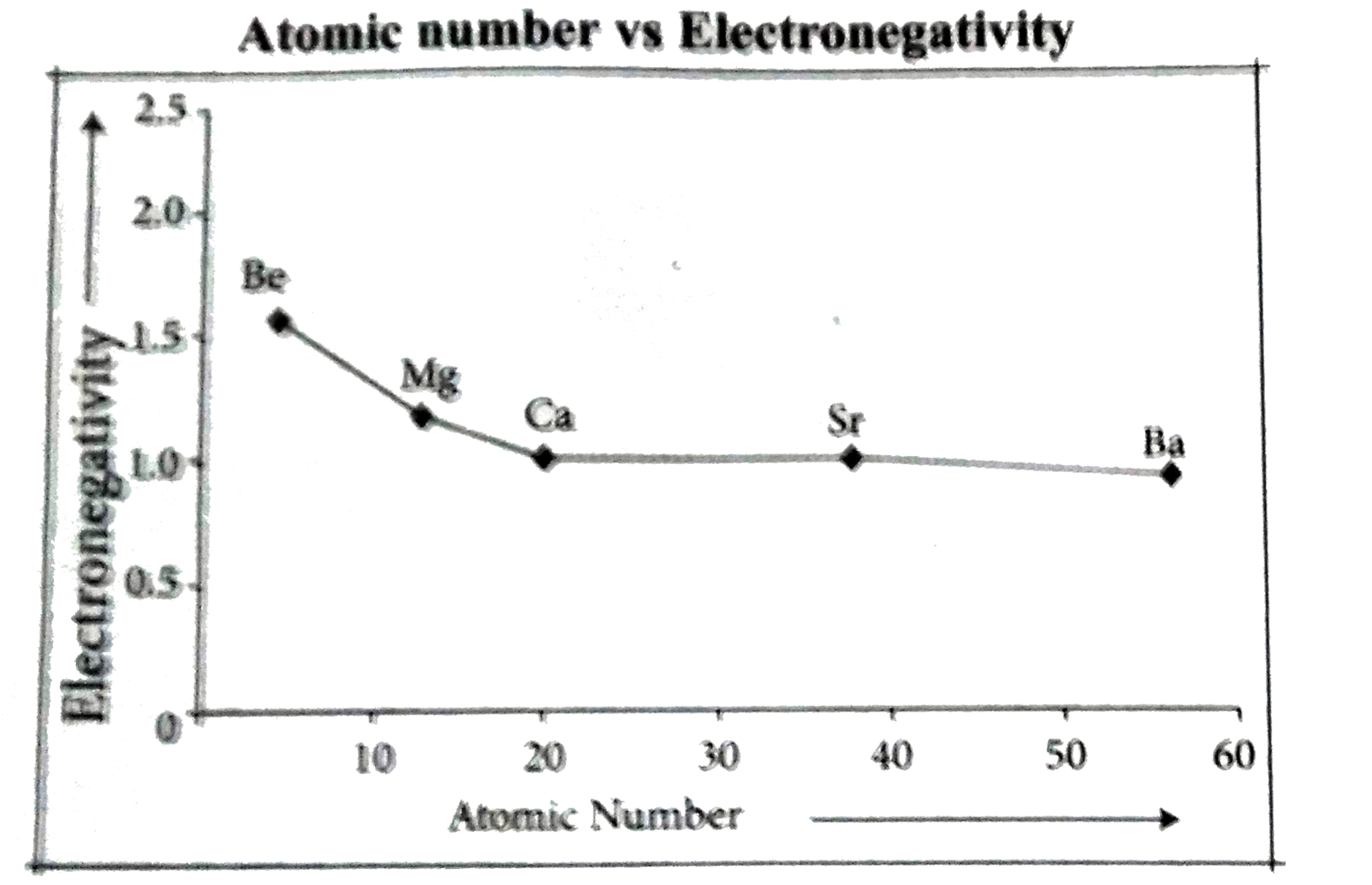
17th group elements :
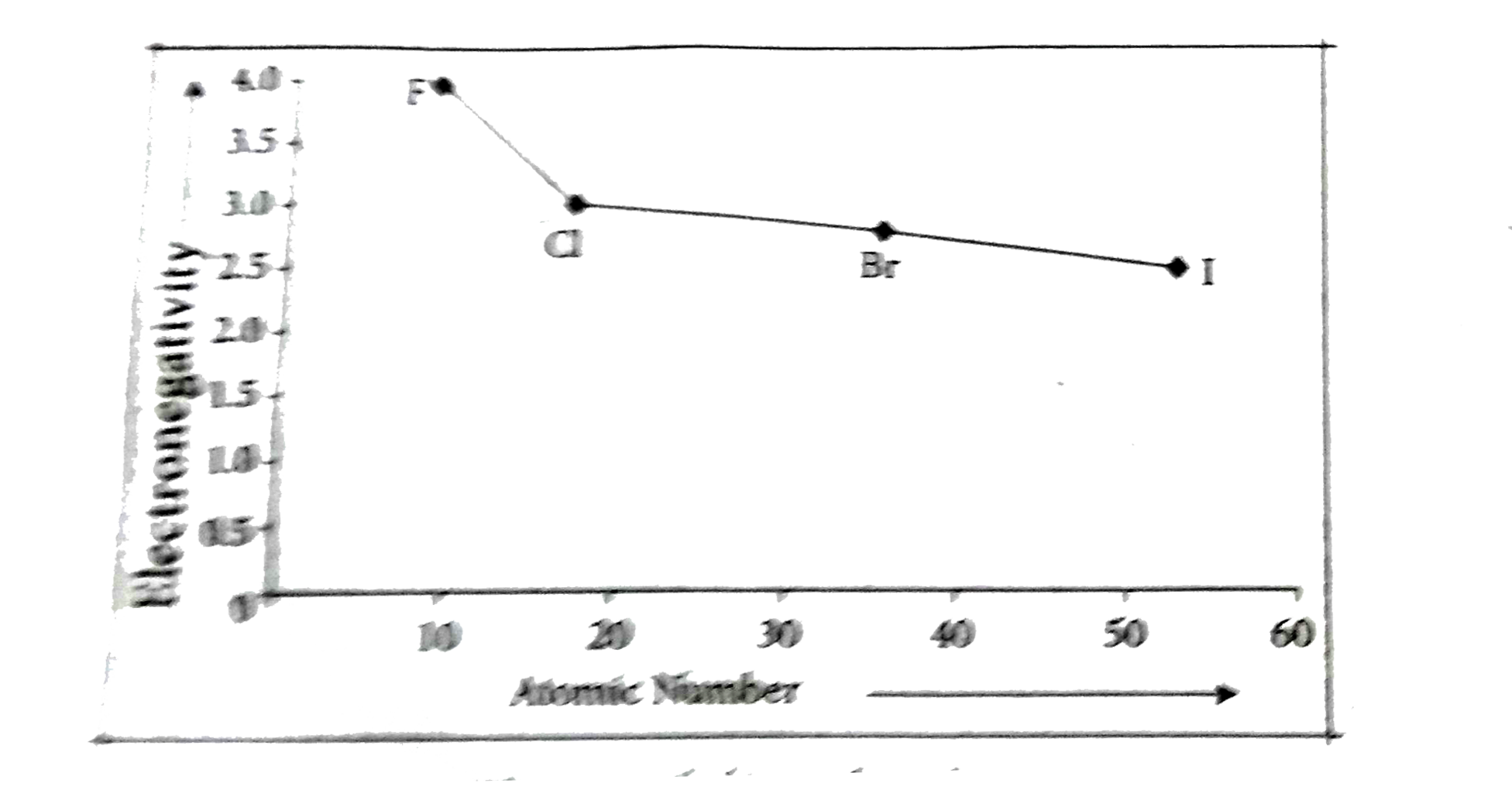
As we go down the group, the electronegativity value decreases. Moving down the group, the electronegativity decreases due to the longer distance between the nucleus and the valence electron shell thereby decreasing the attraction, making the atom have less attraction for electrons or protons.
3rd period:
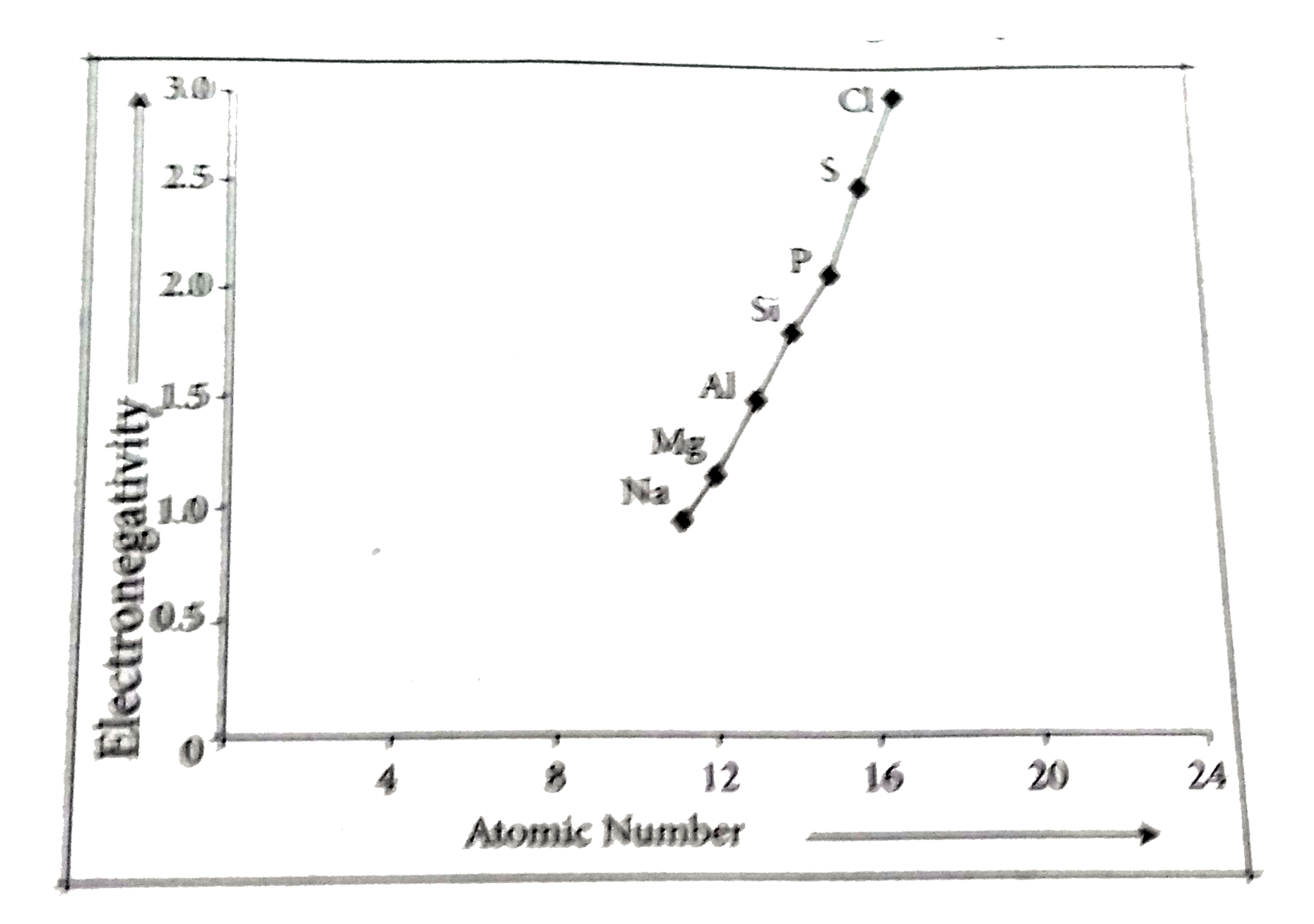
4th period:
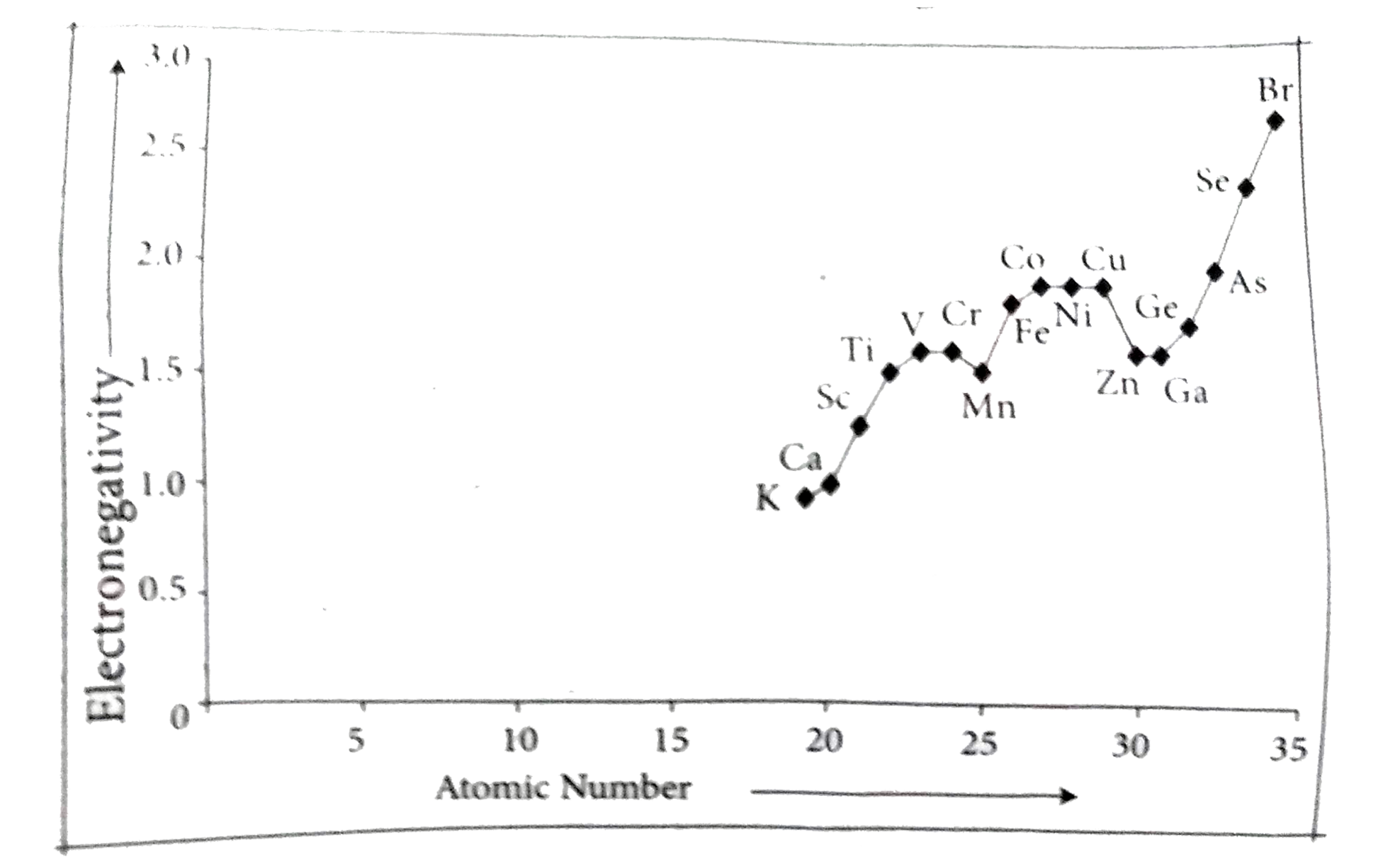
The positively charged protons in the nucleus attract the negatively charged electrons. As the number of protons in the nucleus increases, the electronegativity or attraction will increase. Therefore electronegativity increases from left to right across the period. This occurs due to the greater charge on the nucleus, causing the electron bonding pairs to be very attracted to atoms placed further right on the periodic table.
Related Playlists
- BOOK - FULL MARKSCHAPTER - PERIODIC CLASSIFICATION OF ELEMENTS EXERCISE - Activity 3.11videos
PERIODIC CLASSIFICATION OF ELEMENTS
- BOOK - FULL MARKSCHAPTER - HYDROGEN EXERCISE - Additional Questions Solved 5-Mark Questions10videos
HYDROGEN
- BOOK - FULL MARKSCHAPTER - PHYSICAL AND CHEMICAL EQUILIBRIUMEXERCISE - ADDITIONAL QUESTIONS SOLVED (NUMERICAL PROBLEMS)3videos
PHYSICAL AND CHEMICAL EQUILIBRIUM
Similar Questions
Covalent radii (in A) for some elements of different groups and periods are listed below. Plot these values against atomic number. From the plot, explain the variation along a period and a group.
2nd group elements : Be (0.89), Mg (1.36), Ca (1.74), Sr (1.91) Ba(1.98)
17th group elements : F (0.72), CI (0.99), Br(1.14). T (1.33)
3rd Period elements : Na(1.57), Mg(1.36). AI (1.25), Si(1.17). P(1.10), S(1.04). C1(0.99)
4th period elements : K(2.03), Ca(1.74). Sc(1.44). Ti(1.32), V(1.22), Cr(1.17), Mn(1.17) Fe(1.17). Co(1.16). Ni(1.15). Cu(1.17). Zn(1.25), Ga(1.25). Ge(1.22). As(1.21). Se(1.14). Br(1.14)06:07View SolutionExplain about the different industrial preparation of hydrogen.
02:45View SolutionFind the value of Kc for each of the following equilibria from the value of Kp
(a) 2NOCl(g)⇔2NO(g)+Cl2(g),KP=1.8×10−2 atm at 500 K
(b) CaCO3(s)⇔CaO(s)+CO2(g),KP=167 atm at 1073 K14:06View SolutionArrange giving reason the following elements in increasing order of their atomic size :
(a) Be, O, F (Given that they beiong to 2nd, 16th and 17th groups respectively and to 2nd period).
(b) I, CI, F (Given that they belong to 5th, 3rd and 2nd periods respectively of 17th group).
(c) Mg, N, P (Given that Mg and P belong to 2nd and 15th group respectively of 3rd period and N belongs to 15th group of 2nd period).06:32View Solutionतत्त्व Mg आवर्त-सारणी के द्वितीय समूह में है। यदि Mg का तुल्यांक भार 12 है, तो तत्त्व का परमाणु भार ज्ञात कीजिये।
01:34View SolutionGroup : Be - Mg -Ca -Sr -Ba -Ra
Period : Na -Mg -Al - Si - S -Ci -Ar
Write the order of increasing or decreasing in the given boxes .
 01:06View Solution
01:06View SolutionCovalent radii (in A) for some elements of different groups and periods are listed below. Plot these values against atomic number. From the plot, explain the variation along a period and a group.
2nd group elements : Be (0.89), Mg (1.36), Ca (1.74), Sr (1.91) Ba(1.98)
17th group elements : F (0.72), CI (0.99), Br(1.14). T (1.33)
3rd Period elements : Na(1.57), Mg(1.36). AI (1.25), Si(1.17). P(1.10), S(1.04). C1(0.99)
4th period elements : K(2.03), Ca(1.74). Sc(1.44). Ti(1.32), V(1.22), Cr(1.17), Mn(1.17) Fe(1.17). Co(1.16). Ni(1.15). Cu(1.17). Zn(1.25), Ga(1.25). Ge(1.22). As(1.21). Se(1.14). Br(1.14)View Solution" 3.Write the period and group to which Mg element belongs "
View SolutionAn element "X" belongs to group "15" and "2"nd period in the periodic table the atomic number of elements is
View SolutionWhat is the atomic number of element of period 3 and group 17 of the Periodic Table?
View SolutionWhat is the atomic number of element of period 3 and group 17 of the Periodic Table?
View SolutionWhat is the atomic number of element of period 3 and group 17 of the Periodic Table?
View SolutionWhat is the atomic number of element of period 3 and group 17 of the Periodic Table?
View SolutionElements of a group and Elements of a period
01:09View SolutionWhat is the atomic number of element of period 3 and group 17 of the Periodic Table?
03:41View Solution

